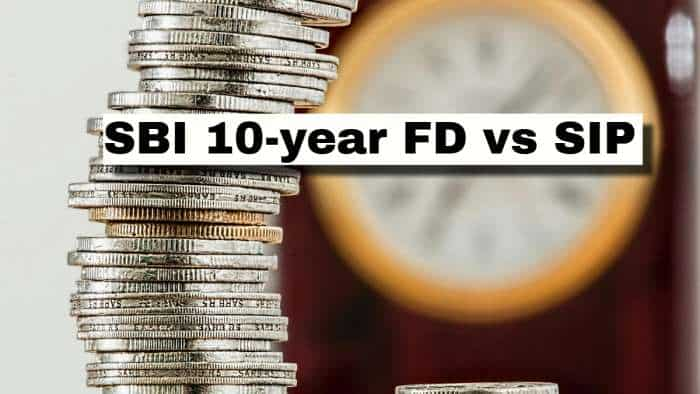How to set up an NPS account online: A step-by-step guide
National Pension System (NPS): Do you know what the National Pension System (NPS) is? It is a pension-cum-investment scheme aimed at providing Indian citizens with old age security. It spans across government and private sectors, offering regulated market-based returns for long-term savings. Subscribers contribute regularly throughout their working lives to build a retirement corpus, benefiting from safe and attractive investment opportunities. Read on to know essential details about the NPS scheme.
)
The National Pension System (NPS) is a government-backed pension-cum-investment scheme aimed at providing old age security to citizens. NPS encompasses a large section of the population as it covers both government and non-government sectors, and offers a slew of benefits and features including tax incentives and flexibility in choosing investment options. It brings along attractive long-term saving avenues that can help subscribers effectively plan their retirement through safe and regulated market-based returns.
The NPS subscriber is expected to periodically and regularly contribute towards the scheme during their working life to create a retirement corpus.
One can join NPS in online as well as offline modes. Here's a list of steps and guidelines aimed at enabling users to set up their NPS accounts seamlessly:
1. You must have a 'Permanent Account Number' (PAN).
2. You require Bank / Demat /Folio account details with the empanelled Bank/Non-Bank (POP) for KYC verification for registration through eNPS.
3. KYC verification will be done by the Bank/Non-Bank POP selected by you during the registration process. The name and address provided during registration must match with POP records for KYC verification. In case the details do not match, the request is liable for rejection. In case of rejection of KYC by the selected POP, the applicant is requested to contact the POP.
4. You will have to fill up all the mandatory details online.
5. Upload scanned copy of PAN card and Cancelled Cheque in .jpeg/.jpg/.png format having file size between 4KB - 2MB
6. You need to upload your scanned photograph and signature in .jpeg/.jpg/.png format having a file size between 4KB - 5MB.
7. You will be routed to a payment gateway for making the payment towards your NPS account from Internet Banking.
8. Contributions are credited in Permanent Retirement Account Numbers (PRANs) on a T+2 basis (which is subject to receipt of clear funds from the Payment Gateway Service Provider).
Once PRAN is allotted, the subscribers can use either the eSign or the Print and Courier options.
For eSign:
1. Select the 'eSign' option on the eSign / Print & Courier page.
2. OTP for the purpose of authentication will be sent to your mobile number registered with your Aadhaar card.
3. After Authentication of the Aadhaar, the registration form will be successfully eSigned.
4. Once a document is eSigned, there is no need to send the physical copy of the form to the Central Recordkeeping Agency (CRA).
5. eSign service charges plus taxes applicable is Rs 25.90 (including UIDAI charge of Rs 20).
For Print and Courier:
1. Select the 'Print & Courier' option on the eSign / Print & Courier page.
2. You will have to take a printout of the form, paste your photograph (do not sign across the photograph) & affix your signature.
3. You should sign on the block provided for signature.
4. The photograph must not be stapled or clipped to the form.
5. The form should be sent within 30 days from the date of allotment of PRAN to CRA at the following address or else the PRAN will be 'frozen' temporarily.
Get Latest Business News, Stock Market Updates and Videos; Check your tax outgo through Income Tax Calculator and save money through our Personal Finance coverage. Check Business Breaking News Live on Zee Business Twitter and Facebook. Subscribe on YouTube.
RECOMMENDED STORIES

LIC Saral Pension Plan: How to get Rs 64,000 annual pension on Rs 10 lakh one-time investment in this annuity scheme that everyone is talking about

Gratuity Calculation: What will be your gratuity on Rs 45,000 last-drawn basic salary for 6 years & 9 months of service?

Rs 1,500 Monthly SIP for 20 Years vs Rs 15,000 Monthly SIP for 5 Years: Know which one can give you higher returns in long term

Income Tax Calculations: What will be your tax liability if your salary is Rs 8.25 lakh, Rs 14.50 lakh, Rs 20.75 lakh, or Rs 26.10 lakh? See calculations

8th Pay Commission Pension Calculations: Can basic pension be more than Rs 2.75 lakh in new Pay Commission? See how it may be possible

SBI Revamped Gold Deposit Scheme: Do you keep your gold in bank locker? You can also earn interest on it through this SBI scheme

Monthly Pension Calculations: Is your basic pension Rs 26,000, Rs 38,000, or Rs 47,000? Know what can be your total pension as per latest DR rates
06:46 PM IST











 NPS Vatsalya: How can you generate Rs 100 crore retirement corpus for your child at 60 years of age?
NPS Vatsalya: How can you generate Rs 100 crore retirement corpus for your child at 60 years of age? Chitra Jayasimha appointed Chairperson of National Pension System Trust
Chitra Jayasimha appointed Chairperson of National Pension System Trust  How to open NPS Vatsalya account: 10 details you need to fill out to register your child now
How to open NPS Vatsalya account: 10 details you need to fill out to register your child now ICICI Bank launches NPS Vatsalya pension account for minors; key features, other details to kow
ICICI Bank launches NPS Vatsalya pension account for minors; key features, other details to kow Axis Bank joins hands with PFRDA to launch NPS Vatsalya scheme
Axis Bank joins hands with PFRDA to launch NPS Vatsalya scheme